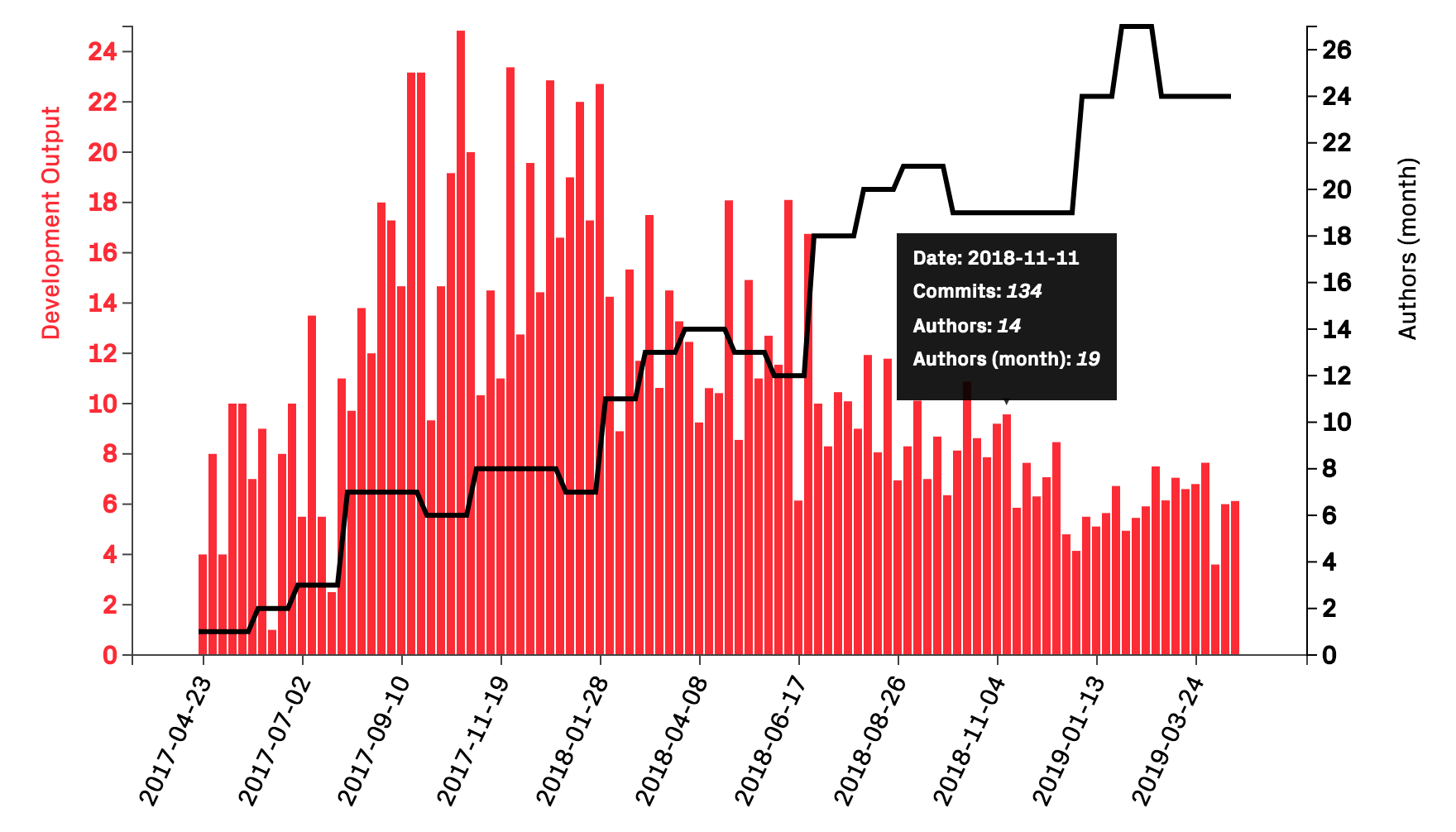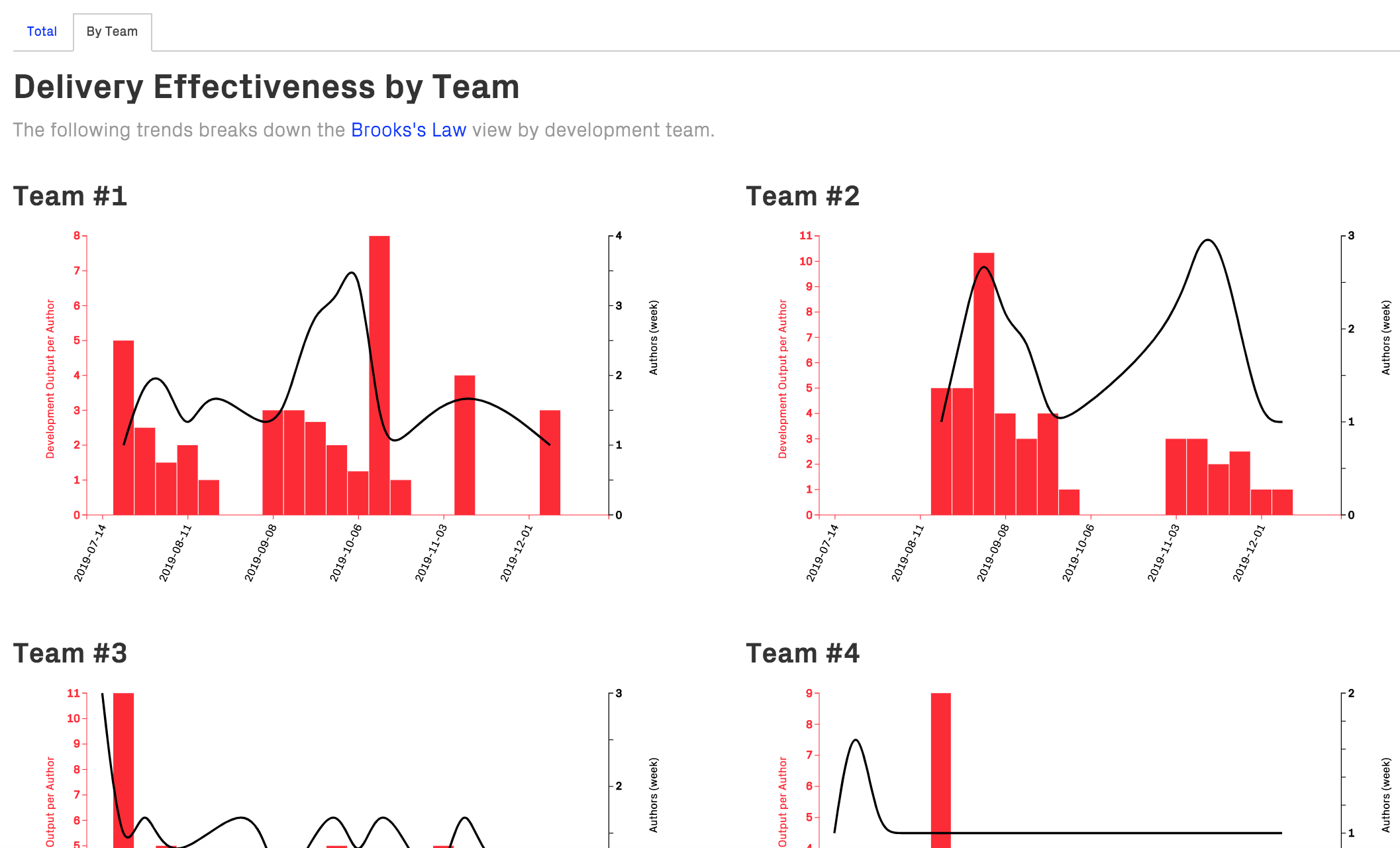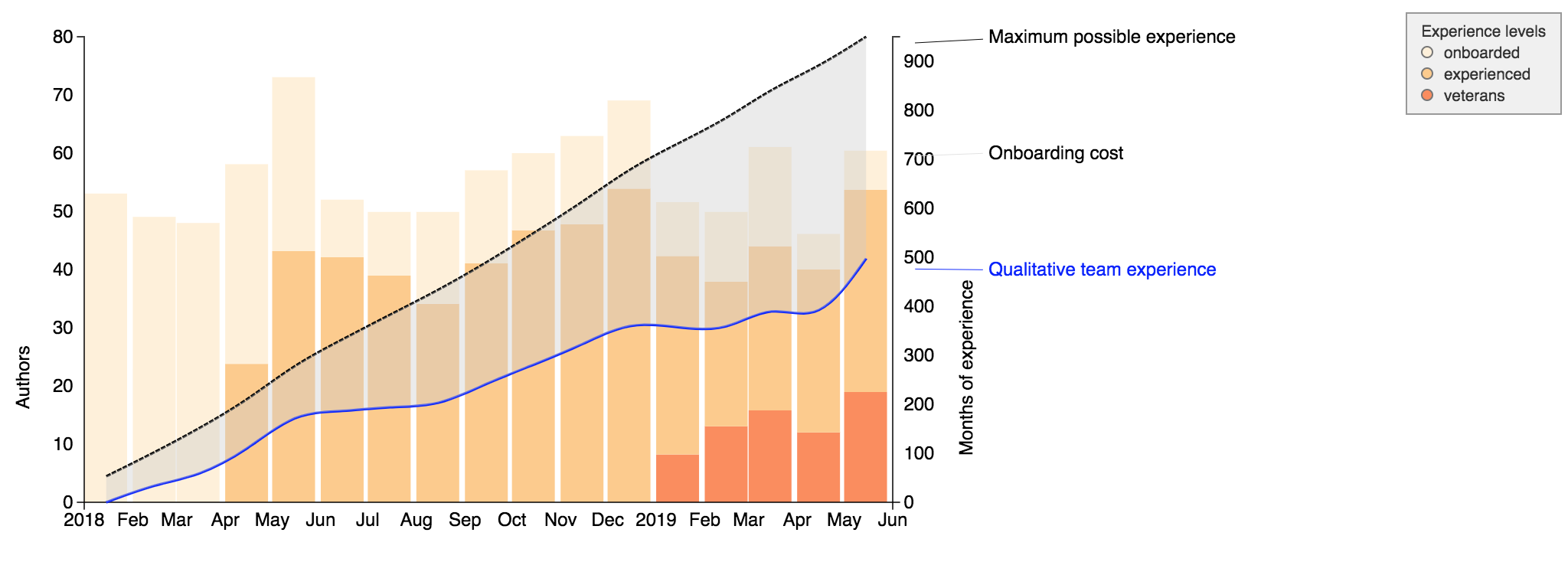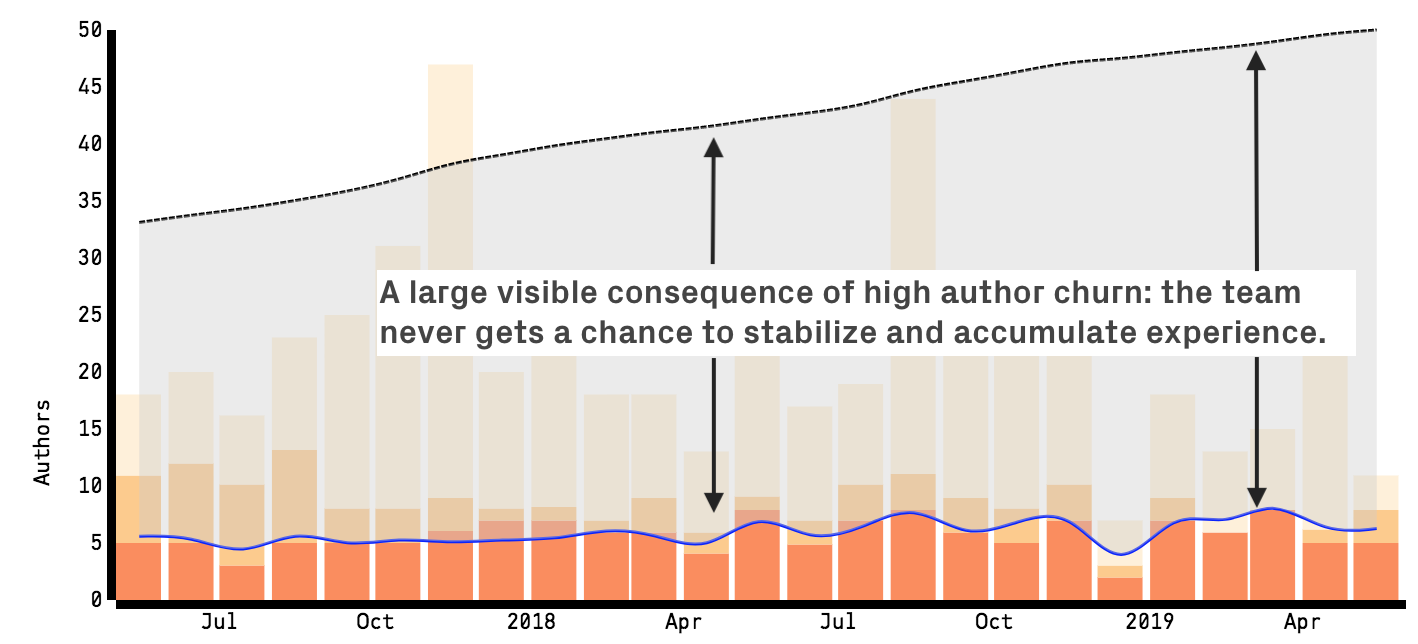Delivery Effectiveness by Organizational Trends¶
The Delivery Effectiveness measures the development throughput in the context of organizational trends.
The throughput measure is based on the ideas from Brooks’ Law. Brooks’ Law states that adding more people to a late software project makes it later. The reason for this is communication and coordination overhead. While we add more people to a project, the total number of available hours increases linearly but the coordination paths increase exponentially. Hence, there’s a point beyond which each additional person’s hours get comsumed by the increased coordination efforts…and then some.
Hence, use CodeScene’s development output to measure the effects of any changes in staff as shown in Fig. 123.

Fig. 123 Trends in development output with respect to the number of contributing authors.¶
The development output graph shows the following data:
Development Output: This is measured by taking all commits during a week and dividing them by the number of contributing authors. The resulting normalized output metric gives you an estimate on the organizations’s output.
Authors (month): This trend shows how many unique authors that have contributed code over a month. This trend is likely to reflect the total number of developers on the project.
If your project is at risk of falling victim to Brooks’ Law, then you will see this as an increased distance between the total number of authors and their normalized output.
Like always when trying to measure things like developer and organizational productivity, the absolute numbers aren’t that interesting; the interesting thing is the trend. Do you get an increase or decrease in response to changes in staffing?
Delivery Effectiveness by Team¶
By configuring teams in CodeScene, you enable a detailed breakdown of the Delivery Effectiveness to a team level:

Fig. 124 Trends in development output for each team.¶
The trends let you detect the frequency of contributions, patterns in each team’s contributions, as well as detecting when a team stops contributing, perhaps as a shift in responsibility to a different part of the codebase.
Follow-up with in-depth Analyses of the Team Composition¶
Should you identify a decrease in development output, then we recommend getting more information via the following analyses:
Coordination Needs: Check if the teams and/or individual developers need to coordinate their work in the hotspots using the Parallel Development and Code Fragmentation analysis.
Decrease in Code Health: The decrease in development output could also be due to an increased level of technical debt, so inspect the Code Health – How easy is your code to maintain and evolve? analysis.
Team Composition: Measure the on-boarding and experience effects as described in the next section below.
Measure Team Composition Trends¶
While Brooks’s Law is one potential reason that a project might hit a wall, there might be other explanations as well. Sometimes a development effort is appropriately staffed, but it takes time for people to get up to speed with a new codebase; on-boarding always comes with a cost. Hence, the team composition in terms of experience on your specific codebase is an important factor.
CodeScene measures team experience as shown in Fig. 125.

Fig. 125 The team composition with respect to experience accumulation and on-boarding.¶
The team composition visualization includes the following information based on the actual contribution span of each author:
Monthly team composition in terms of experience on this particular product. There are three categories: onboarded (0-3 months), experienced (6-12 months), and veterans (+12 months).
Total accumulated experience in terms on months worked on the codebase (black line).
“Qualitative” team experience: this is a weighted value where we consider the experience of each developer currently in the team (blue line). On-boarding a developer will come at a slight cost for a period of time. The model also takes ramp-up effects into consideration.
Often, the area between the black and blue lines is the interesting part. The wider the gap, the higher the on-boarding costs. On-boarding can of course also be viewed as an investment. From that perspective, the area between the lines shows the unrealized potential if the organization manages to keep the team stable and avoid high author churn.
